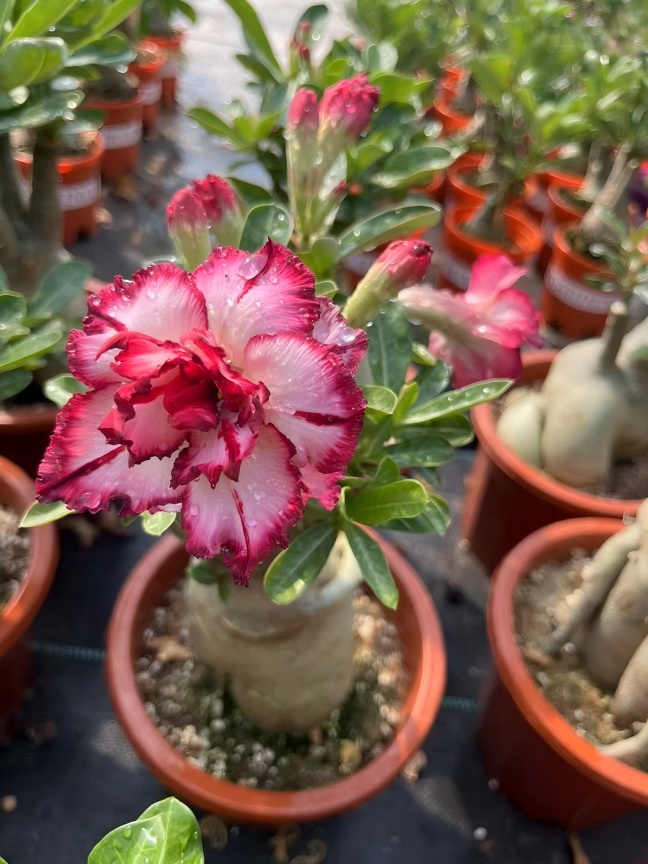Despite its name “Desert Rose” (due to its desert origins and rose-like flowers), it actually belongs to the Apocynaceae (Oleander) family!
Desert Rose (Adenium obesum), also known as Sabi Star or Mock Azalea, is a succulent shrub or small tree in the genus Adenium of the Apocynaceae family. Its most distinctive feature is its swollen, bottle-shaped caudex (base). Native to regions near deserts and bearing vibrant rose-like flowers, it earned the name “Desert Rose”.
Native to Kenya and Tanzania in Africa, the Desert Rose was introduced to South China in the 1980s and is now cultivated in most parts of China.
Morphological Characteristics
Caudex: Swollen, knobby surface, resembling a wine bottle.
Leaves: Glossy green, clustered at the top of the caudex. They drop during the summer dormancy period.
Flowers: Colors include pink, white, red, and yellow. Elegantly shaped, they bloom profusely like scattered stars.
Flowering Period: Long blooming season, lasting from May to December.
Growth Habits
Prefers hot, dry, and sunny conditions. Highly tolerant of extreme heat but not frost-hardy. Avoids waterlogged soil. Thrives in well-draining, loose, fertile sandy soil.
Care Guide
Watering: Follow the “dry thoroughly, then water deeply” principle. Increase frequency slightly in summer, but avoid waterlogging.
Fertilizing: Apply a P-K fertilizer monthly during the growing season. Stop fertilizing in winter.
Light: Requires plenty of sunlight, but provide partial shade during midday summer sun.
Temperature: Optimal growth range: 25-30°C (77-86°F). Maintain above 10°C (50°F) in winter.
Repotting: Repot annually in spring, trimming old roots and refreshing the soil.
Primary Value
Ornamental Value: Prized for its strikingly beautiful flowers, making it an excellent indoor potted plant.
Medicinal Value: Its roots/caudex are used in traditional medicine for clearing heat, detoxifying, dispersing blood stasis, and relieving pain.
Horticultural Value: Well-suited for planting in gardens, patios, and balconies to enhance greenery.
Important Notes
While drought-tolerant, prolonged water deprivation will cause leaf drop, reducing its ornamental appeal.
Winter protection is crucial to prevent frost damage.
Provide afternoon shade during intense summer heat to avoid leaf scorch.
Post time: Jun-05-2025


